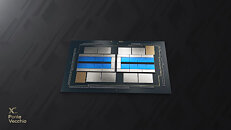
Forspoken Simply Doesn't Work with AMD Radeon RX 400 and RX 500 "Polaris" GPUs
AMD Radeon RX 400 series and RX 500 series graphics cards based on the "Polaris" graphics architecture are simply unable to run "Forspoken," as users on Reddit report. The game has certain DirectX 12 feature-level 12_1 API requirements that the architecture does not meet. Interestingly, NVIDIA's "Maxwell" graphics architecture, which predates AMD "Polaris" by almost a year, supports FL 12_1, and is able to play the game. Popular GPUs from the "Maxwell" generation include the GeForce GTX 970 and GTX 960. Making matters much worse, AMD is yet to release an update to its Adrenalin graphics drivers for the RX Vega, RX 5000, and RX 6000 series that come with "Forspoken" optimization. Its latest 23.1.2 beta drivers that come with these optimizations only support the RX 7000 series RDNA3 graphics cards. It's now been over 50 days since the vast majority of AMD discrete GPUs have received a driver update.












































